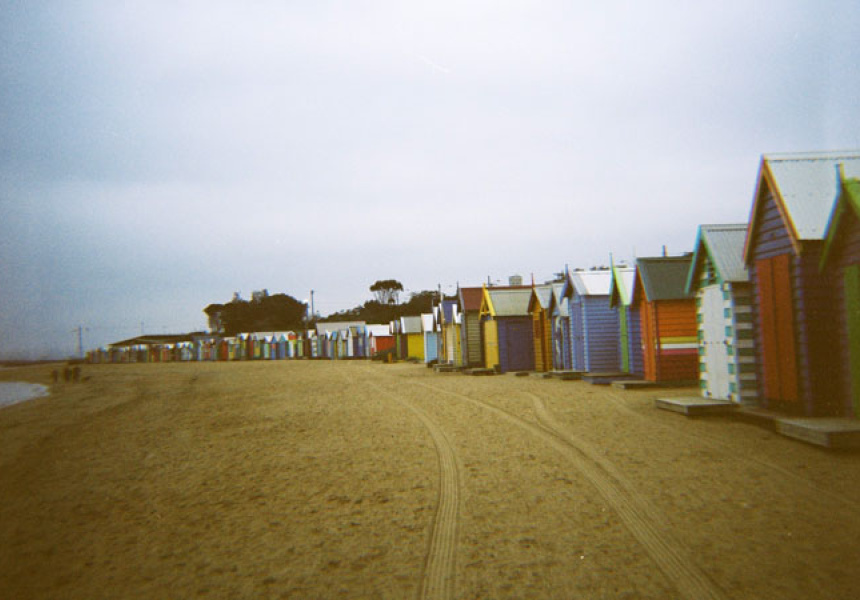In a time of when digital cameras are nothing if not ubiquitous – there’s a good chance you’ve got a quality camera attached to the phone in your pocket right now – Lomography might first appear to be somewhat anachronistic. After all, having the ability to take a perfect photo at a moment’s notice is a given these days. And if your photo’s not perfect you can retake it again and again, with very little effort and almost no cost, until it’s just right.
Lomography, on the other hand, stands out as a very different form of photography. Lomo cameras are usually made from plastic and a specialised lens, and its analogue technology produces moody and imprecise images with obscure light effects against vibrant, unexpected colours and movement.
Despite, or perhaps because of this, Lomography has developed a rich subculture of Lomographers, a vibrant community of fans dedicated to Lomo’s unbalanced exposures, vignetting and over-saturation of colours.
The LOMO was developed by the Soviets as a spy camera for use during the Cold War, and was specifically designed to be used in any condition. The device represented a huge technological achievement, having a 32mm lens capable of capturing images in all conditions and from any perspective. It was deemed a failure, however, as it was not precise enough, light enough or small enough for agents to use in the field.
Never miss a Melbourne moment. Make sure you're subscribed to our newsletter today.
SUBSCRIBE NOWIt was in the early ‘90s that two Austrian students discovered an old Lomo Kompakt Automat in a Czech junk shop. The pair embraced the camera’s origins as a tool for espionage, ‘shooting from the hip’ and rebelling from the established tradition of photographic composition. Their Lomography quickly developed a following in the underground Viennese arts scene, with exhibitions and displays of blurred, fuzzy photos appearing all over the city.
The appeal of the Lomo is in its ease of use. A hugely inclusive and approachable art form, Lomography is for anyone who cares to pick a Lomo up and take photos without wanting to worry about over-exposure or perfect composition of the image. You don’t even need to have any previous experience with or knowledge about photography. Lomo is about pointing and shooting without necessarily knowing what’s going to end up on the film. And because these cameras can shoot in low-light situations, it encourages honest, un-posed photography.
No wonder Karen Boudakian, the director of Lomography Australia/NZ, insists that “lomography is for everyone; it’s all about having fun. Sometimes the pictures you think will be the worst will be the best. That is the beautiful thing with these cameras – even if the image is blurred or has a double exposure, it looks intended and adds life to the photo, like a moment captured from your imagination.”
There are, however, Ten Golden Rules to lomography, but they’re pretty straight forward, and don’t seem too difficult. Of course, like any good set of creative rules, one of the rules is to forget any rules, which only adds to the form’s popularity. But for Boudakian, the main reason Lomo is popular is because it’s so easy. The fact that it takes photography back to its “old-school format” also appeals to many, she says. The images and cameras as engaging due to the process of “loading the film, taking the pictures and then getting them developed. It is much more time consuming than using digital so more energy and thought goes into each image.”
The Lomo community has (perhaps ironically) embraced the digital world, however, with the emergence of photography networking sites such as lomoaustralia.com. These sites allow users to create their own ‘lomohomes’, where they can upload their images and have other users rate and comment. Lomographers have created a strong and tight-knit community offline as well, with galleries around the world dedicated to promoting the form.
Boudakian describes the Lomo community in Melbourne as thriving. “New models offer new and exciting creative options,” she says. One such new product that will hopefully be released in Australia later this year is the Spinner 360 – with the pull of a cord, the camera produces a 360-degree panoramic image, shooting all that surrounds it in less than a second.
But regardless of new products and technologies, for Boudakian lomography will continue to evolve, “as long as people love photography and art”.
The Ten Golden Rules
1. Take your LOMO with you wherever you go
2. Use it all the time, at any time - day or night
3. Lomography does not interfere with your life, it's a part of it
4. Get as close as possible to the objects of your lomographic desire
5. Don't think (William Firebrace)
6. Be fast
7. You don't have to know what's going to be captured on your film
8. You don't have to know what's on the film afterwards either
9. Shoot from the hip
10. Don't worry about rules
Enter our lomo-inspired photography competition Stolen Moments.

